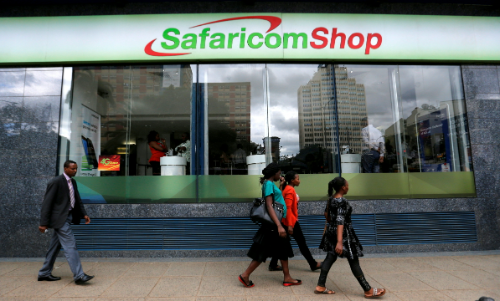Safaricom Expands Rural 5G to Counter Starlink’s Satellite Push

TLDR
- Safaricom is stepping up efforts to compete with satellite internet provider Starlink by expanding its 5G coverage into rural Kenya
- Over the past six months, the telco has deployed dozens of new 5G sites across underserved regions, targeting price-sensitive users with low-cost routers, mobile payments, and flexible data plans
- Starlink, which launched in Kenya in 2023, has seen rapid growth, particularly in remote counties
Safaricom is stepping up efforts to compete with satellite internet provider Starlink by expanding its 5G coverage into rural Kenya. Over the past six months, the telco has deployed dozens of new 5G sites across underserved regions, targeting price-sensitive users with low-cost routers, mobile payments, and flexible data plans.
The push into low-ARPU (average revenue per user) zones marks a strategic pivot from Safaricom’s urban focus. Its 5G routers, now priced at KES 3,000 ($23) — down from KES 25,000 — are bundled with monthly plans starting at KES 4,000 for 50 Mbps. The plug-and-play devices fall back to 4G when needed and are sold door-to-door using M-PESA payments.
This aggressive pricing directly challenges Starlink, whose standard kits cost upwards of KES 30,000 ($231). Starlink, which launched in Kenya in 2023, has seen rapid growth, particularly in remote counties. But its rigid pricing, lack of local distribution, and urban congestion issues have opened a lane for Safaricom’s more adaptable approach. Safaricom now has 1,114 5G sites across 102 towns and all 47 counties. It declined to disclose how many rural users are on the 5G routers.
Daba is Africa's leading investment platform for private and public markets. Download here
Key Takeaways
Starlink's entry into African markets has disrupted the internet service provider (ISP) landscape. Its satellite-based model circumvents traditional infrastructure costs, enabling rapid deployment in underserved areas. This has sparked backlash from telcos across the continent — from Zimbabwe to Nigeria — who argue that Starlink avoids the regulatory and capital burdens of terrestrial operators. In Kenya, Starlink became the seventh-largest ISP within a year, triggering Safaricom’s rural 5G pivot. But Safaricom isn’t alone. In Nigeria, where Starlink is now the third-largest ISP, telcos like MTN have slashed data prices and accelerated fiber rollout. In Zimbabwe, TelOne has teamed up with OneWeb to counter satellite competition. Safaricom’s advantage lies in its local infrastructure, mobile network, and deep M-PESA integration, allowing it to scale quickly and adapt pricing for low-income users. By bundling hardware, using pay-as-you-go models, and pushing affordable access, telcos like Safaricom are redefining 5G deployment strategies to retain market share in a satellite-dominated future.

Next Frontier
Stay up to date on major news and events in African markets. Delivered weekly.
Pulse54
UDeep-dives into what’s old and new in Africa’s investment landscape. Delivered twice monthly.
Events
Sign up to stay informed about our regular webinars, product launches, and exhibitions.




